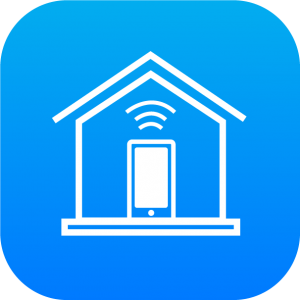With more than 374 million Bluetooth smart building devices expected to ship annually by 2023 there’s plenty of opportunity for developers and engineers to continue to join the Bluetooth mesh networking revolution. What is it exactly that is making everyone go mad for mesh?
The new mesh capability enables many-to-many device communications and is optimised for creating large-scale device networks. Since its release in July 2017, Bluetooth mesh has become the clear choice for large-scale device networks. Already, more than 200 products with mesh networking capability have been qualified from leading silicon, stack, component, and end-product vendors.
At the Bluetooth SIG we are seeing a tremendous amount of momentum behind the mesh networking capabilities of Bluetooth, including large players in the Smart Home market like Alibaba and Xiaomi making strategic platform decisions to support Bluetooth mesh networking for developers using their smart home platform.
Commercial and industrial environments demand a solution that can reliably and securely connect tens, hundreds or even thousands of devices within a robust, low-latency, large-scale device network. Indeed, your choice of smart building protocols to automate whole facilities or enable wireless sensor networks at commercial scale can make or break your solution or product launch.
Reliability
The reliability of a mesh network is judged on its ability to deliver a message from one device to another. Bluetooth mesh is no exception and uses two forms of message relay to ensure uninterrupted message delivery, including; peer-to-peer communications and multipath message relay. But what exactly are these two methods and how do they work?
With peer-to-peer messaging in Bluetooth mesh, you can expect all nodes to communicate directly with one another. There is no centralised hub, which means if one node breaks down there is no domino effect and no single point of failure to your network.
Multipath messaging enables Bluetooth mesh to use a managed flood message relay architecture that is self-healing for reliable message delivery. If a pathway is blocked, the message can simply take an alternative route, allowing wireless installations to achieve the trouble-free performance and scalability of wired systems.
Security
One of the most discussed issues related to the smart building applications is security. Does Bluetooth mesh networking have a security architecture that is designed to address the pressing concerns of companies deploying a large-scale wireless device network? The answer is yes. To ensure all mesh messages are encrypted and authenticated, all communication is secured using AES-CCM with 128-bit keys – essentially a cryptographic algorithm that requires secure confidentiality and government-grade authentication.
Don’t assume this all to be on one layer either. At the heart of Bluetooth mesh security are three types of security keys— device keys, application keys, and network keys. These keys provide security to different aspects of the Bluetooth mesh network and achieve a critical capability in Bluetooth mesh networking security called a separation of concerns. When a message is relayed at network level, it is not necessary for the contents to be read. To read the content, it can only be unsecured with a separate application key, providing true end-to-end security.
Lastly, each mesh packet is obfuscated, making the message difficult to understand, and to remove any identifying information from the message. This prevents others from tracking mesh devices, especially as network security grows in importance and devices continue to move within a range of other networks.
Interoperability
Different vendors and businesses all around the world will have versions of products that will need to be able to work together. Bluetooth mesh delivers multi-vendor interoperability that ensures that the product you buy from one vendor works perfectly with those from other vendors. Interoperability is indispensable in various industries, and Bluetooth mesh constitutes a major step to achieving true multi-vendor interoperability.
Bluetooth mesh bypasses the concern of compatibility by allowing thousands of devices to communicate with each other while still meeting commercial and industrial performance requirements.
In fact, with Bluetooth mesh networking, industrial and commercial networks of thousands of nodes can be supported. High density lighting and sensor deployments are common in these kinds of environments and networks typically must scale rapidly in size. Bluetooth mesh is tailor-made for these large-scale network demands.
All levels of Bluetooth technology are fully specified, leveraging a unique, full-stack approach that defines everything from the low-level radio to the high-level application level. Called immutability, it means that models, and nodes in the network that are adopted, can never be modified. For example, if you were to buy a light switch this year, you’ll still be able to control a light bulb purchased 30 years from now.
The case for blue
Bluetooth technology capabilities go well beyond mesh networking to ensure significant added value for your product. If you’re adding Bluetooth mesh networking support, you can also use the same Bluetooth chip as a beacon for providing localised information and asset-tracking and way-finding services.
Location services solutions generally fall into two categories: proximity solutions and positioning systems. Proximity solutions include item finding solutions such as personal property tags, as well as point-of-interest (PoI) information solutions like proximity marketing beacons, while positioning systems include real-time locating systems (RTLS), such as those used for asset tracking, as well as indoor positioning systems (IPS), like those for indoor wayfinding. It’s these kinds of value-added capabilities, that go beyond mesh, that makes Bluetooth a technology provider of much richer smart building solutions.
In January, the Bluetooth SIG released a new direction finding feature that will enable Bluetooth devices to determine the direction of a Bluetooth signal. The new feature will allow proximity solutions to understand device direction and positioning systems to achieve down to centimetre-level location accuracy, thereby enabling Bluetooth to address the full spectrum of positioning use cases and further establishing Bluetooth as the smart building protocol of choice.
Today, Bluetooth is the leading low-power wireless connectivity technology used to stream audio, transfer data, or broadcast information between devices.
Now, with the introduction of a mesh networking capability and enhanced support to Bluetooth location services, Bluetooth is poised to further catalyse industrial automation, connected lighting, smart city applications, and other industrial IoT and advanced smart building solutions.
——Source:electronicsweekly.com









